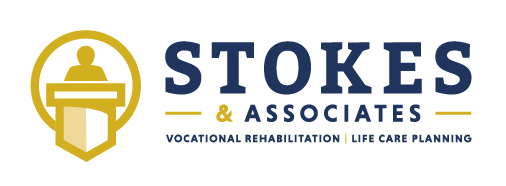Suitability of Return to Work Offers
The primary goal after an injury is to return the worker to their pre-injury place of employment. The employer may tender offers of the same, modified, or alternate job that impacts the individual's vocational outlook and employability. It is essential to assess this return's appropriateness and "suitability" based on physical restrictions and job requirements, which is the purview of qualified vocational rehabilitation counselors.
For example, in the case of an offshore tankerman with a work-related knee injury, the employer of injury offered a return to work as an inland tankerman. The physical restrictions outlined by the physician included no lifting greater than 80 pounds, no jumping, occasional climbing of stairs and ladders, and no work on "unstable ground." The vocational expert's opinion was that offshore work involved "rough waters" (unstable ground); however, work as an inland tankerman did not require work on rough waters and was within the medical restrictions assigned by the treating physician. The employer's detailed job description fell within the physical restrictions outlined, so this was considered a suitable job offer.
In another example, a nurse involved in a motor vehicle collision who sustained a low back injury was eventually released for light level work and prescribed narcotic medication for pain control. Her job of injury was classified as medium-level work beyond the restrictions outlined. Her employer offered her an alternative position as an office nurse to accommodate her physical limitations. The vocational expert contacted the employer for more details concerning the job offer and learned that using prescription narcotics would prohibit her from returning to work. This job offer, therefore, was not considered "suitable."
Key actions taken by vocational counselors in determining the suitability of a job offer include:
Obtain a detailed written job description of the job offered, including all the essential functions and job tasks, specific physical requirements, work schedule, and educational requirements.
Conduct an on-site job analysis to personally assess the worksite to obtain and clarify job requirements, physical requirements, and whether any modifications or accommodations can be made by the employer, as necessary.
Use sources such as the Dictionary of Occupational Titles, Selected Characteristics of Occupations, and the Revised Handbook for Analyzing Jobs to clarify and validate physical requirements (exertional and non-exertional), skills, and education required.
Provide a detailed written job description of the job to the treating or consulting physician for approval concerning the individual's physical ability to perform the job with or without modifications.
Provide follow-up services for at least 30 to 60 days once the injured worker returns to employment to offer any assistance necessary to ensure a successful return to work.
A successful return to work of an injured individual is not only of benefit to the injured worker but can greatly assist in determining the value of a wage loss claim. To do so, the vocational consultant should assess the job offer's details to determine if the job is appropriate and suitable for the individual and not merely accept the offer at face value.
We offer complimentary consultations concerning "hypothetical matters." To strategize with one of our life care plan or vocational experts at Stokes & Associates, please call David Barrett at 504-454-5009 or email dbarrett@stokesassociates.com.
Larry S. Stokes, Ph.D.
Aaron Wolfson, Ph.D.
Lacy Sapp, Ph.D.
Todd Capielano, M.Ed., LRC, CRC, LPC, CLC
Ashley Lastrapes, MHS, CRC, CCM, CLCP, LPC, LRC
Brandy Bradley, MHS, CRC, LRC, CLCP
Elizabeth Peralta, M.Ed., LRC, CRC, CLCP
